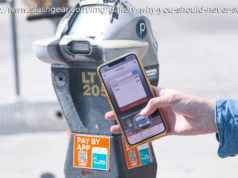Yet if you’re like many people, in a day or two you’ll shrug, pull out your phone and call up an Uber anyway. NYTimes Reports.
You gasp with each new report on Uber’s toxicity. On Tuesday, there was the harassment and discrimination documented in an endless list of internal recommendations by Eric H. Holder Jr., the former attorney general, who was hired to peer into Uber’s ugly depths. Then, while presenting the report to employees, an Uber board member made a sexist remark. (He later resigned .) All of it comes after a parade of escalating scandals that seem more fitting at a company run by Tony Soprano than by nerds in San Francisco.
Yet if you’re like many people, in a day or two you’ll shrug, pull out your phone and call up an Uber anyway. You have a meeting across town and the car isn’t driving itself, at least not yet.
Don’t do it — at least not without considering the full weight of your decision, and the many alternatives you might turn to instead. Try Lyft. Use a taxi, a bus or a train. Heck, hire a limo and a chauffeur with a golden top hat. To encourage a better Uber, it’s time to play the only card you’ve got: If it backslides or otherwise fails to live up to the promises it’s making now, stop using Uber.
There’s a lot at stake. Ride-sharing, as an industry and a civic utility, is too big an idea to be left to a company like the one Uber is now. The company that wins this industry is bound to become one of the world’s most powerful corporations. Its executives and culture will indirectly shape how we build cities, how we use energy, how we employ and pay people. We will entrust it with the safety and the security of our families, our streets, our private data and even, conceivably, the national infrastructure.
Yet the Uber we have now is simply not up to that task. Even its board now acknowledges that the world desperately needs a better Uber. The company is finally taking major steps to prove it actually is serious about improving, as was evident on Tuesday when Travis Kalanick, Uber’s chief, said he would take a leave of absence and the ride-hailing service released a 13-page document of recommendations for changing its culture.
So far, though, we’ve been failing at holding Uber accountable.
More from The New York Times: Google, not the government, is building the future Tech’s frightful 5: They’ve got us Giving the behemoths a leg up on the little guy
Despite months of scandal, with the hashtag #deleteuber sweeping Twitter, Uber’s growth has been essentially untouched. According to the pseudo-earnings reports it regularly releases to the press, its revenue tripled in the past year.
In the United States, its rival Lyft has been growing its market share — and that growth has fueled a huge haul of fund-raising — but it still remains a distant second in the market. And remember, this is a supposedly hobbled Uber, one plagued by internal strife, an exodus of executives, a rapidly deteriorating brand and an existential lawsuit stemming from the shady origins of its purchase of a self-driving car start-up.
But what Uber lacks in autonomous tech it makes up for in autonomous customers. No matter what it does, a lot of us just can’t seem to quit Uber. I’m not judging. I used Uber a dozen times in the past month, including three times last week. I use it for the same reason you do — it works really well.
Across many cities in the United States, Uber is one of the cheapest, safest, most convenient ways to get around. In many parts of the world, Uber is even more than that. This year, I met drivers in India who said the company had significantly improved their lives.
And many transportation scholars are giddy over Uber’s potential. They say it could improve congestion and expand access to transportation to the poor and people with disabilities. It could reduce our dependence on private cars, the most expensive, dangerous and inefficient machines we buy. It could become a catalyst for public transportation systems — a way to solve the “last-mile problem” that bedevils commuter trains — or perhaps a replacement for them: What if, instead of building fixed bus lines, cities subsidized Uber rides, allowing people the flexibility of car travel for the price of a bus?
Yet while it’s plausible that a generic car-sharing company could become such a global force for good, the whole idea begins to seem naïve when you start talking about Uber specifically. In addition to the internal recklessness cited in Mr. Holder’s report, this is a company that has repeatedly deceived, threatened, defied or simply ignored regulators and the press. It has systematically mistreated its drivers. (It has promised to address their concerns in a coming report.)
Even riders aren’t safe from its misbehavior. Last week, the technology news website Recode reported that an Uber executive, Eric Alexander, conducted his own investigation after an Uber passenger in India was raped by a driver in 2014. Mr. Alexander obtained the victim’s medical records, and he shared them with other Uber officials, including Mr. Kalanick. The executives reportedly even wondered whether the victim’s story was a conspiracy cooked up by Uber’s Indian rival, Ola.
In April, when my colleague Mike Isaac asked Uber about the executives’ conspiracy theory, Mr. Alexander denied it through a spokesman. That was a lie, but Mr. Alexander was fired only last week after other reporters began asking. Uber declined to comment.
If you can’t trust a company to respect your medical records when you report a rape on its service — and can’t expect that its executives will tell the truth when confronted about it — how could we begin to trust it on some of the loftier civic goals it and its boosters outline?
We can’t, obviously. Instead, its your job and mine to verify. Uber says it’s going to make its workplace more inclusive.






